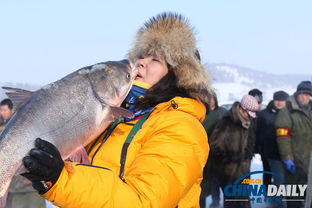Introduction:
Fishing, an ancient pastime that has stood the test of time, requires not only patience but also a keen understanding of the water and the fish you seek. One of the most crucial aspects of fishing is the art of诱钓 (yòudiào) and how to effectively 打窝 (dǎwō) or set up your bait. This article delves into the world of诱钓 techniques and provides you with essential tips to improve your 打窝 skills for a successful fishing experience.
Understanding诱钓 (Yòudiào):

诱钓, or using baits to attract fish, is a fundamental aspect of fishing. It involves selecting the right bait, understanding fish behavior, and employing the correct techniques to entice fish to your hook. Here's a breakdown of the key elements:
Choosing the Right Bait:
The choice of bait is critical in诱钓. Different fish species are attracted to different types of bait. Here are some general guidelines:
- Freshwater Fish: Live bait like worms, minnows, or leeches can be highly effective for species like bass, catfish, and trout.
- Saltwater Fish: For saltwater fishing, artificial lures like jigs, spoons, and plastic baits are often preferred for species like snook, redfish, and striped bass.
- Species-Specific Bait: Some fish, like carp, are known to be attracted to corn or bread, while others, like walleye, may be more responsive to live bait or specific artificial lures.
Understanding Fish Behavior:
To effectively诱钓, you must understand the behavior of the fish you're targeting. This includes their feeding patterns, preferred water temperatures, and the depths they inhabit. By observing these factors, you can tailor your诱钓 strategy accordingly.
Using the Right Techniques:
Once you've chosen the appropriate bait and have a good understanding of the fish's behavior, it's time to apply the right techniques:
- Cast and Retrieve: This is the most common technique, where you cast your bait out and retrieve it back to the boat or shore.
- Trolling: Trolling involves moving your boat with the bait at a specific speed and depth to mimic natural prey movement.
- Jigging: This technique involves moving the bait up and down in the water column to attract fish that are suspended or hiding near the bottom.
Mastering 打窝 (Dǎwō) Techniques:
打窝, or setting up your bait, is equally important in the fishing process. Here are some tips to improve your 打窝 skills:
Selecting the Right Location:
Choose a location where fish are known to congregate. This could be near structure, in deep water, or along the shore. Use a fishfinder or your local knowledge to identify such spots.
Using the Right Amount of Bait:
Too much bait can overwhelm fish, while too little may not attract them. Start with a small amount and adjust as needed based on the fish's response.
Timing Your Bait Deployment:
The timing of when you deploy your bait can be crucial. For example, fishing right before or after the sunrise or sunset can be more productive due to increased fish activity.
Monitoring and Adjusting:
Keep an eye on your bait and be prepared to make adjustments. If you're not getting bites, try changing your bait type, color, or presentation.
Conclusion:
Fishing is an art that requires practice, patience, and a deep understanding of the elements at play. By mastering诱钓 techniques and refining your 打窝 skills, you'll be well on your way to a more successful fishing experience. Remember, the key is to understand the fish you're targeting and to adapt your approach accordingly. Happy fishing!












